Protecting your home and business from devastating fires is important to everyone. Fire protection systems typically come with a fire alarm and some form of suppression system. Once a fire breaks out, it is imperative to have some sort of suppression system available to help mitigate damages to the facility and injury to family members or employees. Examples of fire suppression systems include sprinkler systems, fire hydrants, and fire extinguishers. Fire extinguishers are handy devices that are easily stowed in a home or business facility.
Different Types of Fire Extinguishers
There are five primary classifications for fire extinguishers. Each classification is dependent on the type of material with which the extinguisher needs to be used. Type A is to be used with materials such as cloth, paper and / or wood. Type B is used with flammable fluids and combustible fluids like gasoline, grease, and oil. Type C is to be used with electrical equipment, including appliances. Type D is best used for instances of fire involving flammable metals. Finally, Type K is to be utilized with fires involving vegetable oils, animal oils and fats that are used with cooking appliances. Types A – C are the most commonly required extinguishers for most homes and businesses. Manufacturers have created fire extinguishers that are multipurpose for classes A-C, allowing homes and businesses to store only one type of extinguisher to cover multiple fronts instead of needing multiple extinguishers which may cause confusion in the face of a sudden emergency. Type D extinguishers are usually reserved for factories, and Type K extinguishers are used in commercial kitchen spaces like restaurants and catering locations.
When Should a Fire Extinguisher Be Used?
Fire extinguishers are a great fire suppression tool to be used in conjunction with fire alarms and sprinklers. However, these tools should only be used in certain instances. Prior to using the fire extinguisher, ensure that everyone in the building has been alerted to the fire emergency. Next, call the fire department. This is an important step. Fires can surge out of control in the blink of an eye. Ensuring the fire department is called immediately after noticing the fire will help reduce damage and save lives. Third, make sure you are actually capable of using the fire extinguisher. The contents are under pressure and require a firm grip to spray properly. Fourth, make sure that the fire you are attempting to extinguish is small and generally contained in one area, like a garbage can. Next, make sure that the area in which you are going to use the fire extinguisher is safe from smoke. Should you be in a location that has excessive smoke and struggle with releasing the fire extinguisher, you may be putting yourself in danger as smoke inhalation can be just as hazardous as the fire itself. Finally, make sure you have an exit plan. Should you have an issue releasing the contents of the fire extinguisher and find yourself without an exit strategy, you may find yourself trapped with a spreading fire.
How to Safely use a Fire Extinguisher?
Fire extinguishers are relatively easy to use. The initial step is to remove the safety pin from the handle. This pin is placed in order to avoid accidental release of the extinguisher’s contents. By removing the pin, the handle is now available for use. Make sure to point the extinguisher nozzle toward the base of the fire to ensure the most efficient use of the extinguisher. Next, squeeze the lever slowly and with equal pressure. This will ensure a smooth release of the fire suppressing agent stored in the extinguisher. Finally, slowly move the extinguisher from side to side for even application along the base of the fire. This will provide the greatest chance for the extinguisher to fully suppress the fire.
ATS is your one stop shop for all of your fire extinguisher needs. As fire extinguishers for commercial locations must be inspected annually, ATS’ certified technicians will not only install, repair and maintain your fire extinguisher, but all will conduct the inspections to ensure it is functioning according to the regulations set by the National Fire Protection Association. Contact us today to speak with an expert technician about full service security options for your home or commercial facility.
